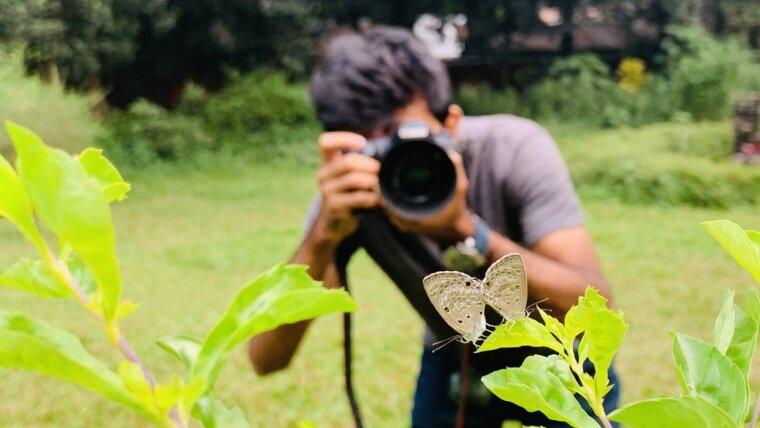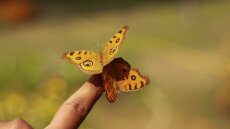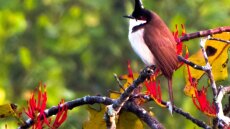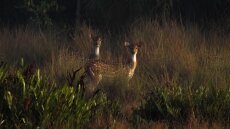
- Life
Published: | By: Kati Kietzmann
Source article
Photos of plant and animal species that are posted on social media can help protect biodiversity, especially in tropical regions. This is the conclusion of a team of researchers led by the German Centre for Integrative Biodiversity Research (iDiv), the Helmholtz Centre for Environmental Research (UFZ), the Friedrich Schiller University Jena (FSU), and the University of Queensland (UQ). Recently published in BioScience, One Earth, and Conservation Biology, the three studies investigated the benefits of using Facebook data for conservation assessments in Bangladesh. The researchers point out that social media can support species monitoring and significantly contribute to conservation assessments in tropical countries.
The tropics are biodiversity hotspots but our knowledge about the populations of animal and plant species in these regions is spotty at best. While monitoring programmes and citizen science initiatives are well established in developed countries, they are still rare in developing countries. However, accurate documentation of biodiversity can help identify which species need special protection. With the increasing use of social media and the widespread availability of high-quality digital cameras, new opportunities are arising. Nature photographers worldwide are sharing their biodiversity observations on social media, which has huge potential. A research team has used the South Asian country of Bangladesh as an example to investigate what contribution Facebook data can make to biodiversity monitoring and, ultimately, to assessing potential protected areas.
In their study, the scientists scraped Facebook groups for nature photographs taken in Bangladesh. The information they were able to derive from the species and location information in the photos was entered into a common data pool with data from the Global Biodiversity Information Facility (GBIF). The GBIF is fed by established citizen science platforms, such as eBird and iNaturalist. This is already working well in the global North. For animal and plant species in developing and emerging countries; however, there is significantly less data. By integrating Facebook data, the research team was able to compile more than 44,000 records for nearly 1,000 animal species, 288 of which are considered endangered according to the IUCN. Over 25% of the data came from Facebook groups, and more than half of the data was for butterflies and birds. "If we only used the data from the GBIF, we would have missed out on data on the distribution of hundreds of endangered species", says Dr Shawan Chowdhury, researcher at iDiv, UFZ and Friedrich Schiller University Jena.
Facebook data shows priority conservation areas
Using this new database, the research team created a map of particularly suitable habitats for the different animal species and compared it with existing protected areas. Currently, only 4.6% of Bangladesh's land area is designated as protected areas, much of which is located in the southwest of the country. In particular, areas where already-threatened species are found are not adequately covered by the current protected areas - a typical phenomenon in tropical regions. To ensure that there are enough protected areas for all threatened species in Bangladesh, the proportion of the area under protection would have to be increased to 39% and these areas would need to be better distributed in the country. The data also showed that, for example, 45% of the butterfly species in Bangladesh were found in green areas in the capital Dhaka, almost half of which are considered endangered. This finding suggests that when planning new protected areas, it might be worth looking at unconventional areas, such as in and around urban areas.
Social media data should be handled with care
Despite these results, the use of social media data still poses challenges. As with many citizen science initiatives, the data collected from users is rarely evenly distributed. Instead, they are often concentrated in easily accessible regions, such as in close proximity to cities. Making social media data usable for research is also currently very time-consuming. For their study, the researchers manually searched the Facebook groups for the species on the Red List and verified each individual photo, including species and location information. New technologies, such as artificial intelligence and deep learning, could make this process easier in the future.
“The integration of biodiversity data from citizen science and published on social media holds great potential, especially for tropical regions where there is a lack of reliable and up-to-date structured monitoring data to inform conservation planning”, says Professor Aletta Bonn, head of research group Ecosystem Services at UFZ, the University of Jena and iDiv. In these regions, observation data published on Facebook or other social media platforms can contribute to a better and systematic assessment of potential protected areas – an important step towards achieving the Kunming-Montreal goals and placing 30 per cent of land and marine areas under protection by 2030.
-
 Mating of Peakock Pansy (Junonia almana), a butterfly species found primarily in Cambodia and South Asia. The photo was taken in a green area in Bangladesh’s capital city Dhaka.Image: Shawan Chowdhury
Mating of Peakock Pansy (Junonia almana), a butterfly species found primarily in Cambodia and South Asia. The photo was taken in a green area in Bangladesh’s capital city Dhaka.Image: Shawan Chowdhury -
 Red Whiskered Bulbul (Pycnonotus jocosus), a passerine bird native to Asia.Image: Shawan Chowdhury
Red Whiskered Bulbul (Pycnonotus jocosus), a passerine bird native to Asia.Image: Shawan Chowdhury -
 The spotted deer or chital (Axis axis) is listed as least concerned. However, in some regions populations are declining and long-term conservation will depend on protected areas.Image: Shawan Chowdhury
The spotted deer or chital (Axis axis) is listed as least concerned. However, in some regions populations are declining and long-term conservation will depend on protected areas.Image: Shawan Chowdhury
Original publications:
Shawan Chowdhury, Upama Aich, Md Rokonuzzaman, Shafiul Alam, Priyanka Das, Asma Siddika, Sultan Ahmed, Mahzabin M. Labi, Moreno Di Marco, Richard A. Fuller, Corey T. Callaghan (2023). Increasing biodiversity knowledge through social media: a case study from tropical Bangladesh. BioScience; DOI: https://doi.org/10.1093/biosci/biad042External link
Shawan Chowdhury, Richard A. Fuller, Md. Rokonuzzaman, Shofiul Alam, Priyanka Das, Asma Siddika, Sultan Ahmed, Mahzabin Muzahid Labi, Sayam U. Chowdhury, Sharif A. Mukul, Monika Böhm, Jeffrey O. Hanson (2023). Insights from citizen science reveal priority areas for conserving biodiversity in Bangladesh. One Earth; DOI: https://doi.org/10.1016/j.oneear.2023.08.025External link
Shawan Chowdhury, Richard A. Fuller, Sultan Ahmed, Shofiul Alam, Corey T. Callaghan, Priyanka Das, Ricardo A. Correia, Moreno Di Marco, Enrico Di Minin, Ivan Jarić, Mahzabin Muzahid Labi, Richard J. Ladle, Md. Rokonuzzaman, Uri Roll, Valerio Sbragaglia, Asma Siddika, Aletta Bonn (2023). Using social media records to inform conservation planning. Conservation Biology, DOI: https://doi.org/10.1111/cobi.14161External link
Puschstraße 4
04103 Leipzig Google Maps site planExternal link